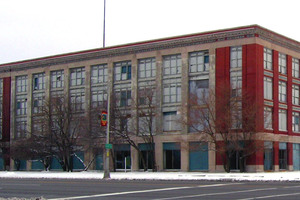
The Model T, the first car available for sale to the general public, was a symbol of all the dawning 20th century had to offer. As Ford wrote in his autobiography, "I will build a car for the great multitude. It will be large enough for the family, but small enough for the individual to run and care for... [I]t will be so low in price that no man making a good salary will be unable to own one – and enjoy with his family the blessing of hours of pleasure in God's great open spaces."
Henry Ford's famous business model was known for interchangeable parts and assembly line production, which provided jobs to the middle class of Michigan and other parts of the burgeoning Rust Belt region. In turn, they could buy the very cars they made for an affordable $350.
The first Model Ts were built at the Piquette Avenue Plant in Detroit, but once production really got rolling he expanded operations to this plant in suburban Highland Park. The plant was the largest in the United States at this point in time, with administrative offices, a foundry, and a power plant all on the premises in addition to the factory area. This model would influence not only Ford's other factories, but practically every other factory to come after. It was here that the 15 millionth Model T was built, and wheeled out onto the streets of America.
Less than a decade later Ford moved operations to another, larger factory in Dearborn. The factory buildings are still owned by Ford, many of which are used for storage. A local Highland Park association offers tours through other factory buildings though, where visitors can walk "In the Steps of Henry."